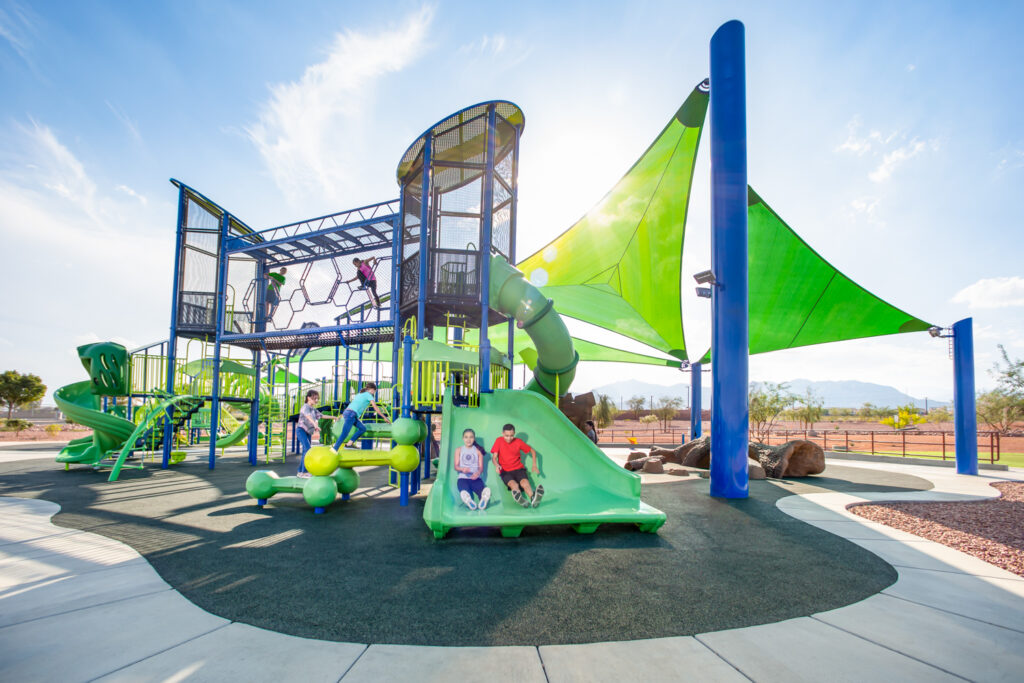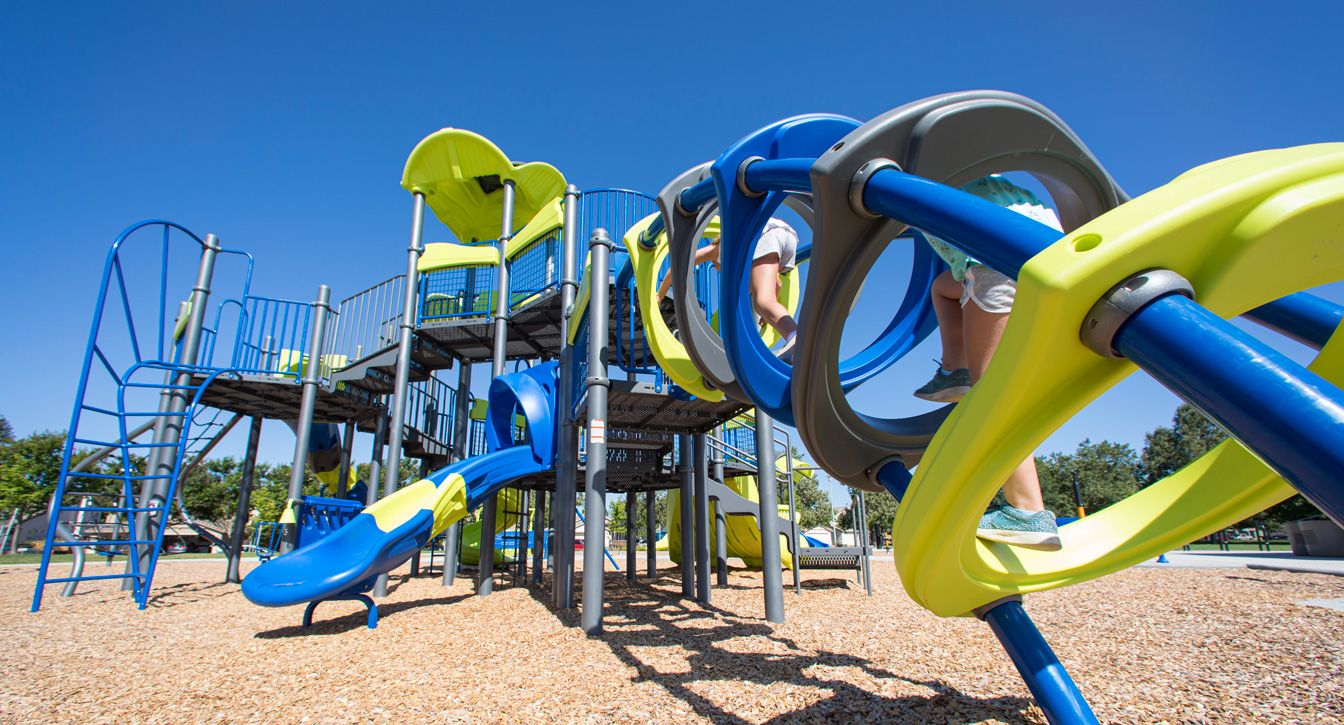

Playground Design History
Once upon a time, playgrounds were just pieces of metal equipment across a vacant space. Little attention was paid to safety. From the 1970s, safety standards changed. Metal has been replaced with softer materials. Slides and swings have safer surfaces—like shaved rubber—under them, reducing injuries.
Playground designs were originally focused on convenience and appealed to adults. A child’s usability wasn’t always factored into the design. These days, they’ve adapted to appeal to the developing minds of children while prioritizing their safety.
Modern-day urban playground planning began In the 1940s. By the 1970s, they were often theme-centered. Benjamin Dominauez created California’s La Laguna Park (also known as “Monster Park”). Jean Dubeffet designed “Jardin d’émail,” a garden playground in the Netherlands. These themes inspire the imaginations of every child who visits them.
The Importance of Playground Design
Playgrounds help children develop their physical and cognitive abilities. These adventurous places inspire them to have fun and interact with other kids. They learn to take turns and share, develop negotiation skills, and make friends they may have otherwise never met!
Accessibility and Inclusivity
Children don’t all have the same developmental needs. Playground designs need multi-sensory elements such as braille, wheelchair-accessible swings, and quiet corners and playhouses for less rowdy playing. The more of these features a playground has, the more children will feel welcome there!
Types of Playgrounds
In addition to multi-sensory playgrounds there are also:
- Traditional playgrounds with swings, slides, teeter-tots, and all your playground favorites.
- Nature-based playgrounds are built with a theme centered around the great outdoors.
- Adventure playgrounds are built upon the ideals of unrestricted play.
Play Behavior and Playground Design
Children’s behavior’s influenced by what’s on the playground. On a basketball court or a jungle gym, kids will be more physical and louder than when playing at an arts and crafts table. That’s why layout is so important; you want louder, more physical play areas separated from quieter areas. One way to accomplish this is by centering your playground around a theme. This can provide a natural flow from calmer play areas leading to more rambunctious ones. Imagine an Alice in Wonderland playground with slides going down the rabbit hole and a croquet field next to a soccer pitch.
Designing Playgrounds for Different Age Groups
Many playgrounds are divided by age group.
- Infant and toddler playgrounds include equipment designed for smaller hands. These often have push-and-pull toys, a sandbox, mirrors, and baby swings.
- Preschool playgrounds for children from about 2 years old to about 5 years old. The equipment here will be bigger and have straight slides, rocking teeter-tots, and areas for hopscotch or drawing with sidewalk chalk.
- School playgrounds have slides, swings, and climbing frames. They also have more sports-related areas with basketball courts or a soccer pitch.
Innovative Playground Designs
New playground designs have equipment covered to block the sun. Some take inspiration from nature with faux rock climbing walls. Others are more educational and use plastic frames with titles showing the alphabet, and some have math equations on them.
One of the world’s most innovative playgrounds is Paris’ Parc de Belleville. Designed as a village with towering staircases for children to climb. There’s even a water area complete with falls where kids can splash around. Here at Metro Recreation, we’ve joined with Water Odyssey. In Maryland, Virginia, West Virginia, and the Washington, DC areas, we can create inclusive water-based playground fun for everyone. Check out some of our water parks for yourself!
Future of Playground Design
Tomorrow’s playgrounds will continue to encourage kids to play freely. They’ll have more green space which is good for the environment. It will give residents in urban areas a place to gather outdoors. There will be larger and more abundant sports fields away from traditional equipment.
Playgrounds are a vital asset to a community and to the children who play there. Every community needs inclusive and engaging spaces for children to play safely. Contact us now, and let’s design a playground to serve your entire community now and in the future.







